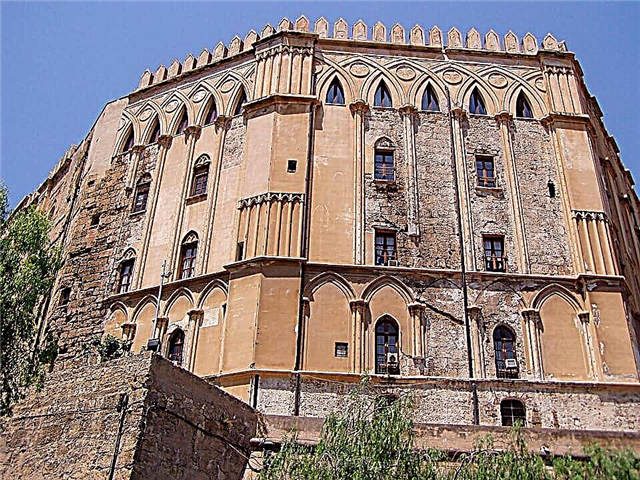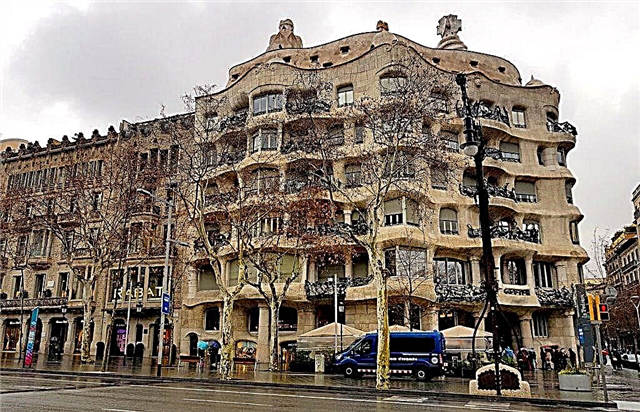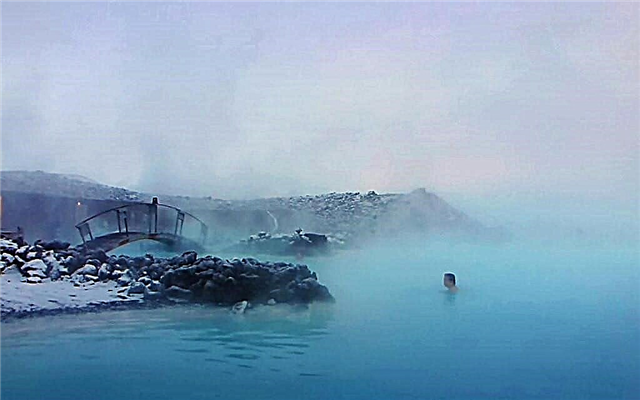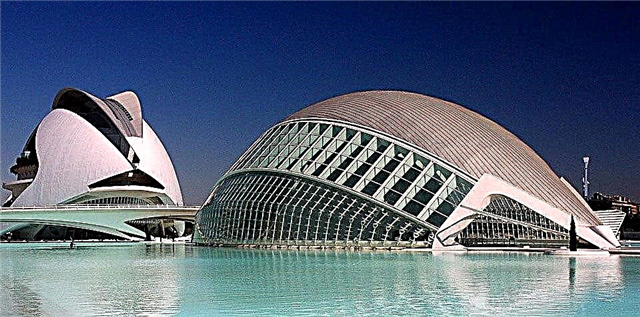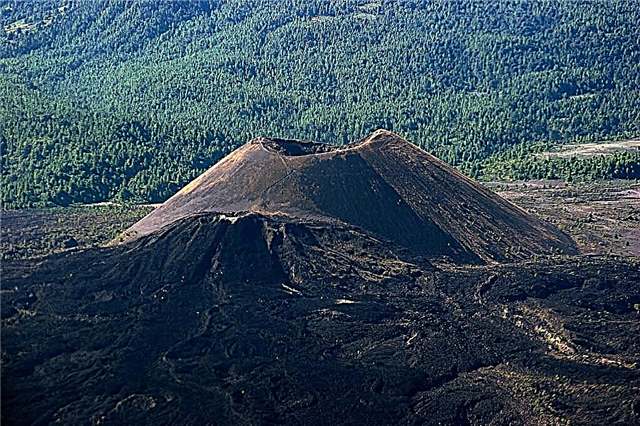Silent since its inception, the Earth suddenly burst into a violent roar and fire in Mexico, creating the Paricutin volcano. There is something mystical about this. Until now, he breathes and attracts people with his mystery.
How did it happen

Farmer Dionisio Pulido was the owner on his land and grew vegetables like an ordinary peasant. In his cornfield, he found a hole, or rather a hole. Overjoyed that he had a natural trash can, for many years he dumped his waste into this hole, disappearing in it like in an abyss. An underground container with a diameter of about 5 meters was literally bottomless.
On February 5, 1943, a rumble was heard from the ground, a hum and the ground began to shudder. The family, led by Pulido, was working in the field on February 20 and suddenly heard a growing rumble from the depths of the Earth. Everything around shook, the earth cracked where the "trash can" was. Frightened, the people left the field. The next day, a mound of ash and slag grew on this place, the height of which grew every hour. A week later, it was already a mountain with a height of 150 meters. The explosions that accompanied the anger of the Earth were heard 300 kilometers around. Stones flying out of the hole under tremendous pressure could demolish everything in their path and, flying up about a kilometer, fell to the ground with a deafening roar.

Preparations for the main action continued throughout the year. So a new volcano was born. During this time, he reached a height of 336 meters. The mountain has occupied the entire cornfield. Lava from the mouth of the volcano began to pour out in June 1944 and with its fiery tongues licked the village of Parikutin, whose inhabitants had left with their belongings earlier, realizing that they would no longer live here.
The volcano raged, then calming down, then ferocious again, as much as 9 years. During this time, ash covered 10 more settlements, and lava flooded around 18 km2.

The volcano calmed down in 1952. During this time, it has risen 472 meters above the surrounding area and now proudly gazes at human people from this height. The absolute mark of the volcano is 3,172 meters above sea level.
As if the Earth made it clear to man that it should not be used as a trash can.
Lunar landscapes and paintings

The artist Gerardo Murillo, better known under the pseudonym Doctor Atl, lived and worked in Mexico at that time. This was a man in love with volcanoes. An enterprising peasant sold him his plot, where a volcano was born, named after the village of Parikutin that died under it. Dr. Atl has been fond of volcanoes since 1909. There are plenty of them in Mexico, but most of all he needed this one, since here it was possible to trace and draw the entire life cycle from birth to eruption and decay. Even after the amputation of his leg, the artist climbed the volcano in order to leave for posterity unique paintings created by the internal energy of the Earth. There are about 10,000 drawings and about 1,000 paintings of this natural phenomenon. The volcano in the night and in the light of the sun, the fire escaping from the vent - the artist tried to capture all this on his canvases. To do this, he even climbed more than once in a helicopter over the volcano in search of a comfortable angle. From drawings and paintings, you can completely restore everything that happened there.
Not extinguished - just sleeping

This youngest volcano in Mexico made it possible for volcanologists from all over the world to study and record the results of work, tracing the entire life of Parikutin.
Now the volcano is considered extinct, but there is an opinion that such volcanoes, from which no one expects vigorous activity, are dangerous. So it was with Vesuvius in 79 AD. After a thousand-year sleep in 1956, the Bezymyanny volcano near Klyuchevskaya Sopka woke up.

Travelers, tourists and just curious people tend to visit and see this pulse of the Earth.
Climbing the slope of the volcano, you can observe floating areas everywhere, as if it is breathing. Soil temperature on slopes is from 43 ° C to 67 ° C. At the top, at the edge of the crater, which is almost 800 meters in diameter, in some places it is impossible to stand for a long time. The heat emanating from the inside roasts the sole like in a frying pan. The soil temperature here rises to 85 ° C. If you walk along the trail laid by thousands of tourists around the crater, then in many places a very strong smell of hydrogen sulfide is felt, confirming the continuing life inside the volcano.
There are no people willing to go down into the crater itself. The volcano is associated with the beast that sleeps. Climbing into the mouth of a volcano, even if it is cold, means getting straight into the mouth of a tiger.
Parikutin's birthday

Residents of nearby villages, like no one else, understand that if this formidable neighbor had not warned them about the possible danger with his roar and warning shots, they would not have escaped the fate of the inhabitants of Pompeii. Lava flows flooded everything around, but the bell tower of the church still towers over this lifeless landscape.

A religious procession takes place here every year on the birthday of the volcano. People thank the Almighty forces that they did not allow a single victim during the eruption.
Local residents and tourists observe an improvement or deterioration in health here. Scientists attribute this to the emergence of an energy field at the site of the formation of the volcano. Forces emanating from the Earth can affect the human field. This adds mysticism to the unearthly landscape and attracts researchers of anomalies from all over the world.
Guides and excursions

The best observation point, from which amazing views of the volcano, a field of solidified lava and a half-buried church, open up, is located in the nearest village of Angauan.
Here you can find a guide who will show you the way to Parikutin crater.

The multitude of travel options makes it affordable for almost everyone. The most convenient way is to get to the bottom by car, and after a half-hour ascent along the trail, you will be at the top.
Local guides offer horseback riding for those who don't mind horseback riding.
The hiking option is suitable for more sturdy explorers.
How to get there on your own

This natural monument is located in Mexico in the state of Michoacan. The city of Uruapan, which is located 30 km from the volcano, has an international airport. There, upon arrival, you can rent a car and travel comfortably around the country. There are several villages near the destination where you can leave your car and get there either on foot or by horse. The closest village to the volcano is Nuevo San Juan Parangaricutiro, 6 km away is the village of Angauan. It is best to rent an all-terrain vehicle and get to the bottom. On it you can also see other sights of this interesting country.
Feel the pulse and breath of the planet!
Recommended reading Tour to the volcano - an extreme journey.


